GCSE Tutoring Programme
Our chosen students improved 1.19 of a grade on average - 0.45 more than those who didn't have the tutoring.
In order to access this I need to be confident with:
Arithmetic Types of quadrilaterals Area of a rectangleThis topic is relevant for:

Area Of A Parallelogram
Here we will learn how to find the area of a parallelogram, including compound area questions, questions with missing side lengths and questions involving unit conversion.
There are also area of a area of a parallelogram worksheets based on Edexcel, AQA and OCR exam questions, along with further guidance on where to go next if you’re still stuck.
What is the area of a parallelogram?
The area of a parallelogram is the amount of space inside a parallelogram. It is measured in units squared ( cm^{2}, m^{2}, mm^{2} etc.)
A parallelogram is a quadrilateral ( 4 sided shape) with 2 pairs of parallel sides. The parallel sides are the same length and the opposite angles are equal. The interior angles of the parallelogram add up to 360° .
The area of a parallelogram is calculated by multiplying the base of a parallelogram by its perpendicular height.
Area of a parallelogram formula:
Let’s see why this works:
If we cut off the triangle at one end of a parallelogram and attach it to the other we form a rectangle. The formula for the area of a rectangle is length\times width (or in this case base \times height).
Our final answer must be in units squared
E.g. square centimetres ( cm^{2}) , square metres ( m^{2} ), square feet ( ft^{2} ) etc.
What is the area of a parallelogram?
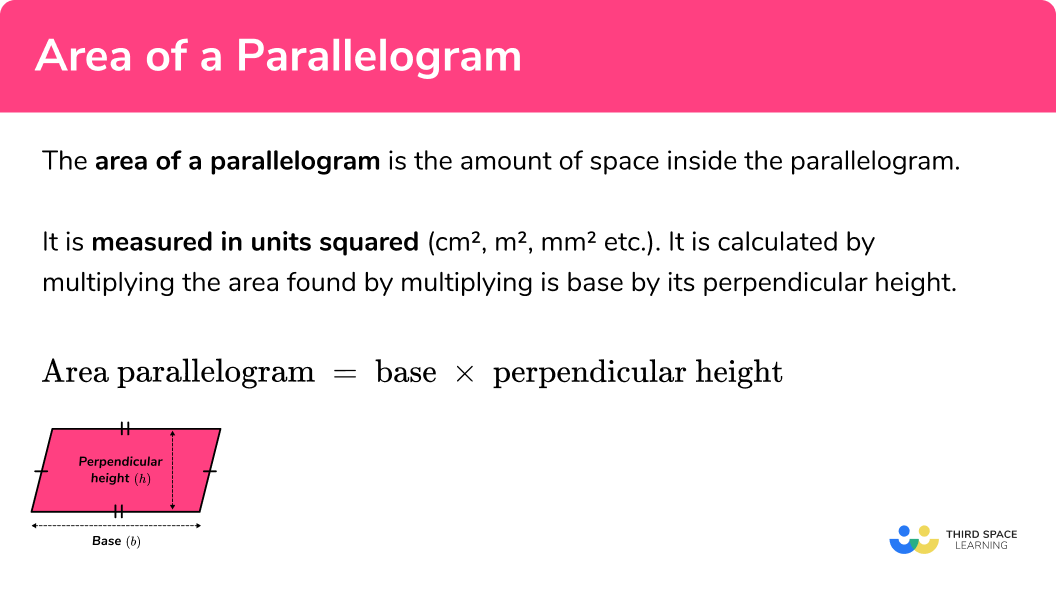
Parallelogram
A parallelogram is a 2D shape with opposite sides that are both parallel and equal in length. The diagonals of a parallelogram bisect each other. We can categorise them as quadrilaterals because they have 4 sides.

We need to be able to identify the three special types of parallelograms.
E.g.
A parallelogram where all sides are equal is a rhombus.
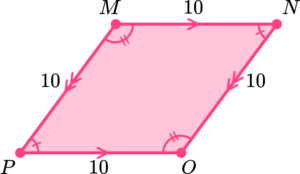
E.g.
A parallelogram in which all angles are right angles, and the diagonals are equal is a rectangle.
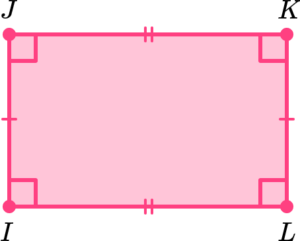
E.g.
A parallelogram with all equal sides and all angles equal to 90 degree, and equal diagonals is a square.
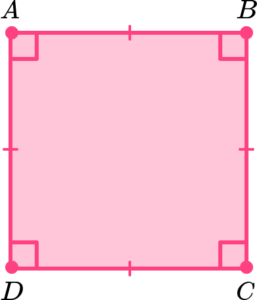
A parallelogram is, essentially, a slanted rectangle, so we can use the same calculation to find the area of a parallelogram as you would calculate the area of a rectangle, as long as you use the perpendicular height rather than the slant length.
E.g.
Calculate the area of the parallelogram.

Area = 10 x 6 = 60
Let’s explore more about parallelograms below.
How to find the area of a parallelogram
In order to find the area of a parallelogram:
- Identify the base and the perpendicular height of the parallelogram.
- Write down the formula for the area of a parallelogram.
- Substitute the given values and calculate.
- Write down your final answer with units squared.
How to find the area of a parallelogram
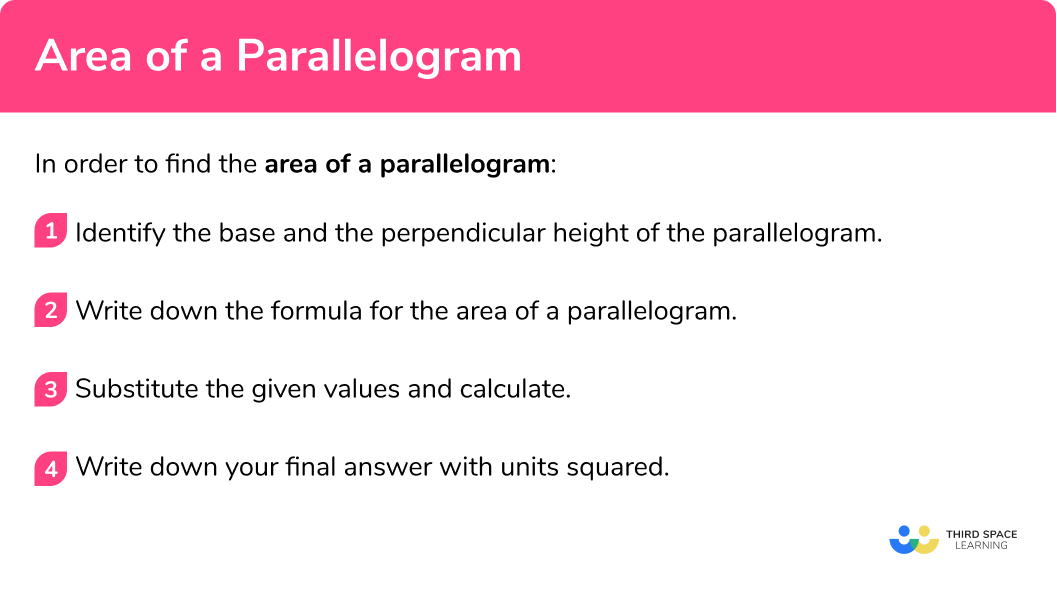
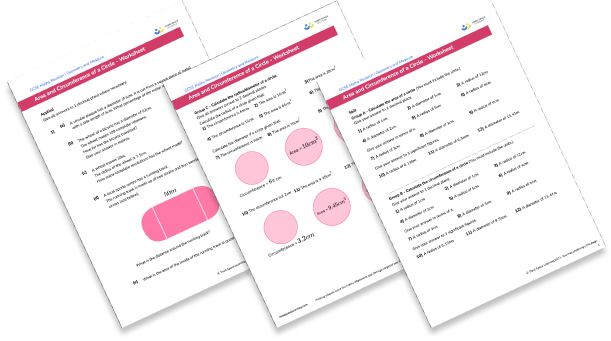
Area of a parallelogram worksheet

Get your free Area of a parallelogram worksheet of 20+ questions and answers. Includes reasoning and applied questions.
DOWNLOAD FREE
Area of a parallelogram worksheet

Get your free Area of a parallelogram worksheet of 20+ questions and answers. Includes reasoning and applied questions.
DOWNLOAD FREERelated lessons on area
Area of a parallelogram is part of our series of lessons to support revision on area. You may find it helpful to start with the main area lesson for a summary of what to expect, or use the step by step guides below for further detail on individual topics. Other lessons in this series include:
- Area
- Area of a circle
- Area of a quadrilateral
- Area of a trapezium
- Area of an equilateral triangle
- Area of compound shapes
- Pi r squared
- Area of a rhombus
- Area of a right angled triangle
- Area of an isosceles triangle
- Area of a triangle
- How to work out area
- Area of a rectangle
- Area of a hexagon
- Area of a pentagon
Area of a parallelogram examples
Example 1: finding area given the base and perpendicular height
Find the area of the parallelogram below:
- Identify the base and perpendicular height of the parallelogram.
Base = 10m
Perpendicular height = 6m
2Write down the formula for the area of a parallelogram.
\text { Area }_{ \text { parallelogram }}=\text { Base } \times \text { Perpendicular Height }
3Substitute the given values and calculate.
4Write down your final answer with units squared.
\text { Area }_{\text {parallelogram }}=60 \mathrm{~m}^{2}
Example 2: finding the area of a parallelogram requiring converting units
Find the area of the parallelogram below:

Identify the base and perpendicular height of the parallelogram.
We have two different units for the base and perpendicular height so we need to change the measures to a common unit.
Let’s convert both measures to metres.
There are 100cm in a metre, so if we divide the base by 100 we get 8m
Base = 8m
Perpendicular Height = 6m
NOTE: It is important to note that the 6.3m is the length of the diagonal and not the perpendicular height.
Write down the formula for the area of a parallelogram.
\text { Area }_{ \text { parallelogram }}=\text { Base } \times \text { Perpendicular Height }
Substitute the given values and calculate.
Write down your final answer with units squared.
Example 3: worded question
A painter is painting a logo on the side of an office block. The logo is composed of four identical parallelograms and is shown below. Each tin of paint costs £1.20 and contains enough paint to cover an area of 2.5m^{2} . How much will it cost to paint the logo?
Identify the base and perpendicular height of the parallelogram.
Base = 4m
Perpendicular height = 2m ( 8\div4 parallelograms)
Write down the formula for the area of a parallelogram.
\text { Area }_{ \text { parallelogram }}=\text { Base } \times \text { Perpendicular Height }
Since there are 4 identical parallelograms in the logo we need to multiply the area by 4 .
\text { Area }_{\text {Logo }}=4 \times(\text { Base } \times \text { Perpendicular Height })
Substitute the given values and calculate.
Write down your final answer.
\text { Area }_{\text {Logo }}=32 \mathrm{~m}^{2}
Now that we have calculated the area we need to find how many tins of paint are needed to paint the logo.
Since each paint tin covers an area of 2.5m^{2} we need to divide 2.5 into 32 .
32 \div 2.5=12.8 tins
Since you cannot buy 0.8 of a tin we need to round the number of tins to 13 .
Each can costs £1.20 so 13 \times 1.2=£ 15.60
Therefore the total cost of painting the logo is £15.60 .
Example 4: calculating base length given the area
Find the base length of the parallelogram below:
Identify the base and perpendicular height of the parallelogram.
Base = ?
Perpendicular height = 11cm
In this question we are given the area of the parallelogram as 242cm^{2} , which we can use to calculate the base.
Write down the formula for the area of a parallelogram.
\text { Area }_{ \text { parallelogram }}=\text { Base } \times \text { Perpendicular Height }
Substitute the given values and calculate.
Write down your final answer.
Base length = 22cm
Example 5: compound area
Calculate the area of the shaded region below:
Identify the base and perpendicular height of the parallelogram.
Before finding the area of the shaded region, we need to split the shape into two parallelograms. We can cut the shape in half because both parallelograms are identical.
Each parallelogram has a perpendicular height of 5cm and base length of 8cm .
Base = 8cm
Perpendicular height = 5cm
Note: We will also need to subtract the area of the square since it is not shaded.
Write down the formula for the area of a parallelogram.
\text { Area }_{ \text { parallelogram }}=\text { Base } \times \text { Perpendicular Height }
There are two identical parallelograms so we need to multiply the area of the parallelogram by 2 and then subtract the area of the square which is calculated by 3^{2} :
\text { Area }_{\text {Shaded Region }}=2 \times(\text { Base } \times \text { Perpendicular Height })-3^{2}
Substitute the given values and calculate.
Write down your final answer with units squared.
\text { Area }_{\text {Shaded Region }}=71 \mathrm{~cm}^{2}
Example 6: finding the area involving algebra question
Calculate the value of x in the parallelogram below:
Identify the base and perpendicular height of the parallelogram.
Base = 2x + 3
Perpendicular height = 2cm
We are also given the area:
Area = 14cm^{2}
Write down the formula for the area of a parallelogram.
\text { Area }_{ \text { parallelogram }}=\text { Base } \times \text { Perpendicular Height }
Substitute the given values and calculate.
\text { Area }_{\text {Parallelogram }}=\text { Base } \times \text { Perpendicular Height }
Write down your final answer.
x=2
Common misconceptions
- Using incorrect units for the answer
A common error is to forget to include squared units when asked to calculate area.
- Forgetting to convert measures to a common unit
Before using the formula for calculating the area of a parallelogram, we need to ensure the units used are the same. If different units are given (E.g. length = 4m and width = 3cm ) we must convert them both to either cm or both to m .
- Length of the slanted side and perpendicular height
Sometimes in a question we are given additional lengths which are not needed in our calculations. An example of this is being given the length of one of the slanted sides of the parallelogram. To calculate the area we must ignore the slant length and instead use the vertical height.
Practice Area of a parallelogram questions
1. Find the area of the parallelogram below:




b \times h = 12 \times 5.5 = 66m^{2}. Remember to have units squared in your final answer.
2. Find the area of the parallelogram below:




Convert 450cm into metres by dividing by 100 . Multiply the base length (7m) by the converted perpendicular height (4.5m) to equal 31.5m^{2} . Be careful not to multiply by the length of the diagonal instead of the perpendicular height.
3. Calculate the area of the garden below:




Find the area of the parallelogram by multiplying the base length and the height. Find the area of the triangle by multiplying the base and the height and dividing by 2 . Add together the area of the triangle and parallelogram.
4. Calculate the length of the base of the parallelogram below:




Divide the area by the perpendicular height of 11m . Remember that you are not calculating the area so your final answer should not be in units squared.
5. Calculate the area of the shaded region below:




Convert all measures to cm . Find the area of the parallelogram first by multiplying the base times the height. Add on the area of the rectangle which is calculated by multiplying the length and the width.
6. Calculate the base length in the parallelogram below:




Multiply the base times the perpendicular height, Remember to multiply the two by both terms. Rearrange the equation to calculate x . Substitute the value of x back into 4x-11 to calculate the base length.
Area of a parallelogram GCSE questions
1. Find the area of the parallelogram. Remember to show your full working.
(2 marks)
(1)
722m^{2}(1)
2. A landscaper is planning a rectangular garden for a client. The garden will feature a patio and sandpit both in the shape of parallelograms. The remainder of the garden will be covered in grass. Below is a blueprint of the garden.
(a)What area of the garden will be covered in grass?
(b) A roll of grass covers an area of 3m^{2} and costs £14.50 . How much will it cost to put grass in the garden?
(7 marks)
(a)
Area of rectangle = 15\times7 = 105
(1)
Area of both parallelograms: 5\times4 = 20 and 4.5\times1.5 = 6.75
(1)
Area of rectangle – area of parallelograms= 105 – 20 – 6.75
(1)
78.25m^{2}(1)
(b)
78.25\div3 = 26.08 rolls of grass
(1)
27\times14.5(1)
£391.50(1)
3. Calculate the value of x in the diagram below:
(4 marks)
(1)
18x-54=36(1)
Evidence of rearranging equation to solve for x
(1)
x = 5(1)
Learning checklist
You have now learned how to:
- Calculate and compare the area of parallelograms using standard units
- Calculate the area of parallelograms and related composite shapes
The next lessons are
Still stuck?
Prepare your KS4 students for maths GCSEs success with Third Space Learning. Weekly online one to one GCSE maths revision lessons delivered by expert maths tutors.

Find out more about our GCSE maths tuition programme.